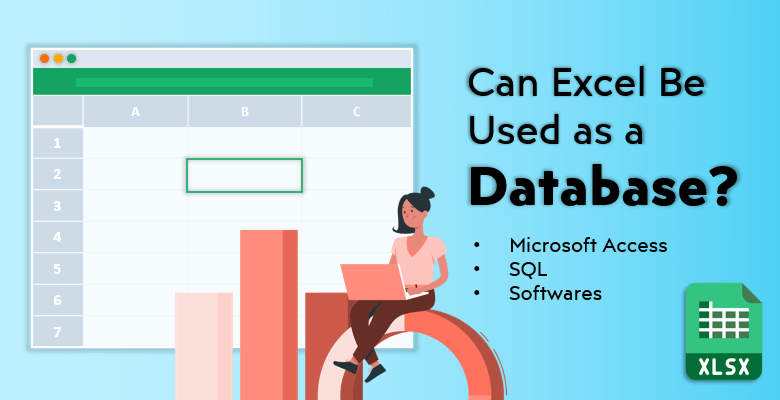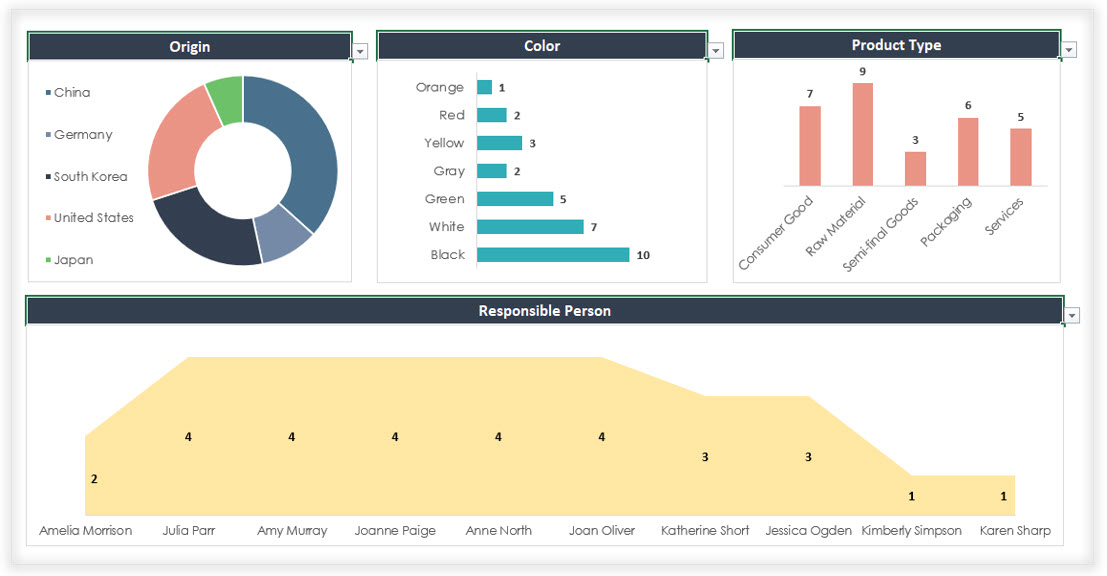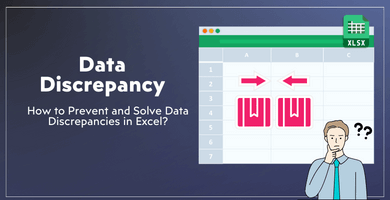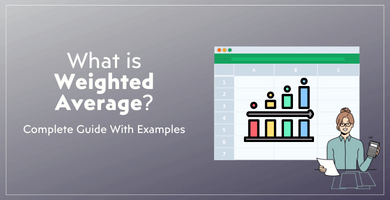
Can Excel be Used as a Database?
Perhaps, the first question you might ask is ‘Can I use Excel as a database?’.
The answer would be yes… however, using Microsoft Excel as your main database can come with some disadvantages as well as its advantages.
Later in this chapter, these advantages and disadvantages are going to be detailed. But first, let’s take a look at the exact definition of the concepts of spreadsheets and databases.
Spreadsheets: Data Management
A spreadsheet is simply an electronic ledger. They have processed data entered in by a person. They are used to store data and this data can be managed by creating charts and graphs to accompany it.
A database is a collection of digitally stored data. They are far more complex in terms of data storage compared to spreadsheets. Also, the data they maintain is only raw, the information is completely unprocessed.
Microsoft Excel is first and foremost is a spreadsheet program included in the Microsoft Office collection. All of the other spreadsheet software is based (or sometimes copied or cloned) from Excel. However, it is possible to use a spreadsheet tool such as Excel as a database as well.
Simple Tables, Excel Tables and Pivot Tables
For this use, Microsoft has integrated three features into Excel for you to use it as a database: Simple Tables, Excel Tables and Pivot Tables.
The Simple Tables feature has been in Excel since its integration to Microsoft since 1987. It is as a simple spreadsheet database as it can be. It comes with the option for using it as a horizontal or a vertical database.
The Excel Tables has come with the 2007 update on Excel. This new feature allowed Excel to automatically create new columns and rows of data based on the information you put in.
It moved away from the manual approach Simple Tables carried out for more than three decades. This automated way of updating spreadsheets and using as a database paved the way for other spreadsheet software in order to follow in these steps.
And the third option is Pivot Tables. Pivot Tables and also Pivot Charts are powerful tools to sort, summarize and filter your data. After these processes, your complex and large amount of data is presented to you in spreadsheets as a summary.
With the update of 2010 in Excel, Pivot Tables feature was bolted as a crucial and notably useful tool for generating reports and getting analyses on your data in.
After explaining each of the ways for you to use Excel as a database, now, let’s look at the advantages and disadvantages of using it as such.
The Advantages of Databases Over Spreadsheets:
- Excel is much easier to use than any other spreadsheet software. That is why it is much more practical compared to complicated and hard to learn database software and programs. Also, setting up the program takes so much less time than other spreadsheet applications and database programs as well.
- Microsoft Excel comes across as the cheap option as well. Compared to its competitors in the spreadsheet program market and also, the database tools, it is one of the cheapest options out there.
- It is faster and easier for basic data processing. With its wide range of automated functions, it is the best option for people that are not experts or do not have enough technical experience.
The Hidden Risks of Using Excel as a Database:
- The data volume is a very important factor if you are working in accounting, finance or IT departments. Excel has limitations for the number of worksheets and spreadsheets you can add.
In addition to its limits on growing and updating new data, it also can create performance issues such as crashing, slowing down and unable to save.
- If your workflow or the flow of your data is not linear, then Microsoft Excel might be not the best option for you to create your database in. Excel works much better with non-complicated and straightforward data processing with its step by step approach.
- Perhaps the biggest disadvantage of Excel is the lack of collaboration with others. You would be having several copies, all with a different version of the same file and it can become a nightmare to track the files and the updates on them.
It lacks the collaboration tools as well as real time tracking the changes and the updates everyone does to the same spreadsheet.
In other online spreadsheet tools such as Google Sheets, more than one person can open and live edit the document in front of them. The best part about it is that everyone can see who is changing what in real time.
- Even though you can put a password before opening an Excel file, it is certainly not the strongest and the safest choice. There are tools on the Internet that simply crack the password of the Excel file without even needing to know the password.
- An Excel file exists in only one drive of one device. And its history and past versions of it can be tracked in that device or by checking the properties of that file. However, if you are entering in delicate and sensitive information, it is not the optimal option to store that data in an Excel file. Because project managers and supervisors cannot know or track the potential copies of those Excel files with sensitive and secret information.
For example, you are a project manager and you gave tasks to the accountants.
Even with non-disclosure agreements and documents signed to keep the data in those files secret, duplicates can be made and it would go unnoticed for the whole company.These were the reasons why on some occasions and situations it is best to avoid using Microsoft Excel as your database.
Otherwise, your data can become corrupted; it can get stolen or it can be sent to those who you do not want their hands on the sensitive information; you can lose money and most importantly, it can hurt your company and your business significantly.
When You Should Replace Your Spreadsheet with an Online Database?
When You Deal with Large Amounts of Data
Microsoft Excel is not a powerful data storage application.
It is not practical to keep all the information and raw and processed data in regards to your business only on one Excel file. It is for the best interest of the accounting and finance departments in your company and for your business in general to use only one and the same file in order to process your data.
Because some companies, whether they are small or large, choose to add new sheets, rows and columns into the same Excel file for each new data they gather up. This huge Excel file becomes a slow and a heavy object. It takes a lot of time and processing to open and then also, slow to operate in as well. In addition to the speed of the file, think of making one mistake and entering a wrong variable into your database.
It can turn into a nightmare in a second.
Excel is good at processing and accessing small amounts of data. But if your business grows, it is illogical to depend on a single Excel file for all your accounting and finance information. Or you can say ‘I will separate every quarter’s numbers and data into different Excel files’.
That is completely acceptable; however, after some point in time, all of your data and the files you created can become a complicated mess. That is why it is best to continue with an online database if you are to store large amounts of data.
When You Want to Collaborate
As it is mentioned above in the previous chapter as one of the disadvantages of Microsoft Excel, it lacks the multi person editing and live tracking.
Excel is an offline tool. It is not built and designed to operate with a team environment.
It is a program to use individually and then, to show and share what you entered and created with others.
If you want to track what everyone is doing on a single spreadsheet or a database; if you want to look at the different and past versions of the information and to see the people editing the file, then you should replace your offline spreadsheet program with an online database.
When You Want Security
Large companies, huge brands and giant conglomerates have one obsession in common: Security.
They spent enormous amount of time and also money in order to protect their information and their customers’ information as well.
That is why Excel’s one step protection with an easily breakable password is not something these businesses are looking for and it is not a tool they are using for their databases.
Since the developments, information and data they have cannot be shared or sent to anyone, they choose to use more secure databases rather than using Microsoft Excel spreadsheets.
When You Want Detailed Customization
Of course, Excel has up to 400 functions in itself.
They can be used heavily and are being used for more than 30 years in the field of accounting and finance by experts, accountants and financial consultants.
However, it only accomplished what is meant to do from it: Basic data processing and creation of charts and graphs based on the processed data.
If your company requires specific and complicated tasks to go through with raw or processed data, then, instead of Microsoft Excel’s spreadsheets, use an online database.
When You Want to Confirm Your Data
As it is very easy to enter your data in Excel, it is much easier enter the wrong data in Excel as well.
Excel lacks what online database tools such as Google Sheets (and also Docs) is very proficient at: Quality control.
It is reported by Raymond R. Panko in his article titled “What We Know About Spreadsheet Errors” 94 percent of Excel spreadsheets contain errors in them.This is the reason of the checking and controlling the data put in is lacking in Microsoft Excel.
You need to do a manual check one by one for every piece of information you entered. That is just impossible when you are working on a deadline.
That is why if you replace the spreadsheet program with an online database, you can easily access the quality checking tools and let the program do what it does best.
Using Microsoft Access or SQL to Manage Your Data
Microsoft Access is a database management system developed by Microsoft and included in the Microsoft 365 package.
With it you can store your data with its own format and extensions or if you choose, you can import or link other data collections in and to other database systems.
SQL is a programming language used by experts or professionals of the field. It is in the Microsoft database management system or simply known as DBMS.
It has an interface similar to Microsoft Excel; however, it is a powerful database engine storing small and large amounts of raw data. So for any database management job or task, you should learn SQL to master your data analysis skills.
Microsoft Excel, Microsoft Access and SQL:
Although they seem similar and have some functions that they all share, Excel and Access and SQL operate on different levels. Also, their focus on what they want to accomplish differs as well. So, let’s look at their pros and cons:
Microsoft Excel
+ Excel has been the most used spreadsheet program among businesses since its creation in 1985 for Macintosh and its integration into Windows in 1987. And today, in the digital age, every business uses Excel in their accounting or finance department.
+ Nobody does basic data processing better than Microsoft Excel. It can organize, format and calculate data easily and quickly.
+ With the advantage of Visual Basic for Applications (VBA), the formula function works very well. Also, the ‘macros’ it uses gives users an easier and a faster process in order to enter and operate on their date.
+ It has an enormous collection of charts, graphs, tables and spreadsheets. In addition to the collection, the customization for these charts and graphs are very detailed as well. From colors to font types to different shapes and sizes.
– Excel operates on one worksheet. That means that other and perhaps similar worksheets would not be in relation to that one worksheet. The connectivity between its files and spreadsheets is lacking. This is called the Flat File Database.
– Excel can flex its limitations to a point. Large amounts of data entered and processed in a file and one spreadsheet can cause problems. These problems can range between slowing the whole process down to crashing and losing important information with it.
– This means it works smoothly only with small data sets. If the number of rows and cells goes through 100,000, the program will slow down.
– Even if it is a smaller data collection, you still have to enter all of the data yourself. One by one entered data is also processed by you manually.
Microsoft Access
+ As it is mentioned as a disadvantage of Microsoft Excel, Microsoft Access focuses on the connectivity of different sets of information and data. It is easy to store the data in one database and then, whenever you want in the future, you can relate and link that data on that database on a different set of data. Referring and importing data and tables is very practical.
This is called the Relational Database.
+ When you reference a data or an information from a different database in your document, that data is simultaneously updated without you even doing anything. The automatic update function of Access passes Excel when working with a database.
+ Large amounts of data are what Microsoft Access was designed to handle. It does not slow down or crash if larger amounts are added to the database. In addition to that, it offers a limitless scalability factor due to the fact that adding any amount of data into the system is free.
+ Because it is a Microsoft software, it also supports VBA and the macros which can be used in Excel as well. It furthers and improves its other automation functions.
+ When you put in new information to be processed, testing and then retesting the macros and formulas you already put into the system is not needed. Even though with the new information, the system will adjust itself and provide new and correct results.
+ These accurate numbers and outcomes that come with processed data also provides generated reports. These reports can be monthly, annually or even daily. While also showing again Access’ heavy focus on automation, these reports are automatically generated based on the results of your database.
– Access takes place in the package Microsoft has called Suite. And it is safe to say that it is the most complicated one there. Unlike Excel, the learning curve is there and that curve is very steep. Without any knowledge of any of the programming tools or skills, learning and getting the hang of Access can be quite tough.
– It is hard to create a database without having already created one. You need to first learn and then practice on creating databases, testing queries and adjust planned reports. This database platform is very different on how to operate and work on from Microsoft’s other programs such as Word or Excel.
– Perhaps the biggest difference between Excel and Access is the ability to visualize your data. Excel provides hundreds of colorful and interesting options in order to present plain numerical data in an engaging way; Access lacks this. And by ‘lacking’, any visualization of any data in Microsoft Access is absent.
SQL
+ Similar to Microsoft Access, SQL can also take on large amounts of data. The SQL programming language is designed (depending on the software and program used) to function with more than one million rows of data. Also, it does not slow down or crash due to the heavy size of the data, it continues to function effortlessly.
+ SQL has a consistent structure. Its organization functions successfully because its tables are strict on having the accurate data with the accurate results.
+ Unlike Excel, it pays attention to team environments and focuses on the collaborative functions of the software.
+ It separates the analysis reports and the data itself. That way they both function separately and distinctively from each other; at the same time, they can connect and function together if you want.
If every person on your team has the same data set, you can just send a .txt file with the instructions. So that they can all get the same results. By doing that, you eliminate the risk of corrupt files hurting the only data file you have. And also, the size of the data file remains small.
+ SQL allows you to save queries, so that, when new information has entered the system, you can easily engage the same query you have with the new data.
+ Reports, reports, reports. Same with Microsoft Access’ intricate report generating function, SQL also provides stable reports and offers consistent and accurate calculations with it.
– SQL is not for the average user… at all. In fact, it is a language, you have to learn this language before you operate on it. And also, it is a unique one and not similar to any other programming languages.
– As it is mentioned, it is for the use of programmers and experts on handling data. Similar to every database platform (such as Microsoft Access), it needs training and practice to learn.
– Because it deals with large amounts of data, it takes a lot of space. You might need extra space and memory for your different data sets.
Someka Templates with Database Options
Purchase Order Generator and Tracker
This professional and well-structured Excel template provides three main sections in itself. With the Purchase Order Generator, you can create your purchase orders easily and also export it as a PDF in order to send your buyers or sellers.
It also has a Product Database as well as a Service Database. In this section, every little detail about the products such as description, general information, item number, unit volume and price is noted.
And the other section is Order Tracking. In it, you can track your current orders and also, past orders as well.
The template is specifically designed for you to save time and continue your purchase orders without worrying about saving or tracking them.
Small Business ERP Template
Enterprise resource planning (ERP) is one of the must-have systems for every business to manage and track their account and financial reports.
This Small ERP Excel template offers sales targets for the future of your company, product costs and sale prices, invoice, purchase and stock records and pretty much everything related to your financial accounts of your business.
With its innovative ERP system integrated into Excel and the unique, professional design which can be used in presentations, makes this template the best Excel ERP template you can find online.
Proforma Invoice Template
The other Excel template with a database is the Proforma Invoice. This free template offers two detailed databases with a customer and a product database. It will be the only tool you need when you want to send your proforma invoice to your customers. It is designed for you to quickly operate, create an invoice with all the details you want and send it to your buyers.
If you would like to learn what is proforma invoice, common mistakes that companies make, how to create an easy one in Excel check this practical guide out.
Product Database Templates
In order to save all your product or/and service data in one place, a customizable Product Database template can save you huge amount of effort. With dynamic list, product form and dashboard options, you may also analyse your portfolio with real metrics.
If you want to keep your product info in an online tool, then product database google sheets template may be suitable for you.
Customer Database Templates
Keeping track of all your customers in a well-organized tool may save you huge amount of time. With our Excel Customer Database and Google Sheets Customer Database templates, you can both save your client info in one place and also analyze them according to demographics.



